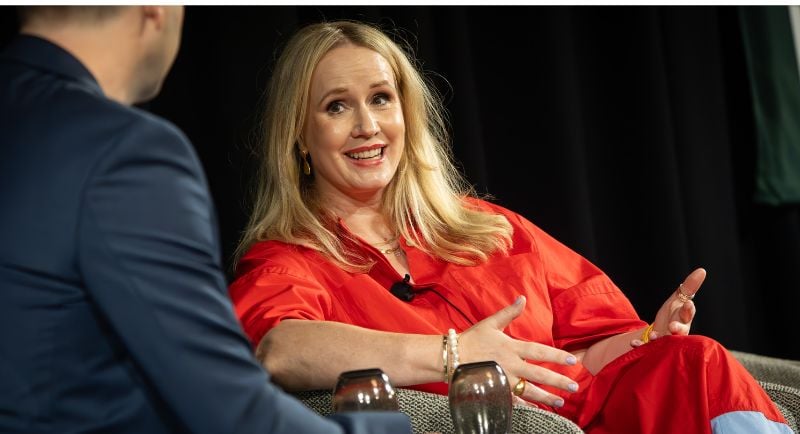At today’s The Future of TV Advertising Sydney event, Paramount Australia’s Beverley McGarvey delivered a rallying cry for unity across the broadcast industry, challenging legacy rivalries and calling for a new era of strategic collaboration. In a candid fireside chat, the President of Network 10 and Paramount’s head of streaming in Australia made it clear: the fight for audience attention is no longer a zero-sum game.
“This is actually a smaller market than the UK,” McGarvey said. “Arguably, we should have [collaborated] five years ago, but we’re here now.”
Elsewhere, McGarvey spoke to the unique position of Paramount in the Australian market, straddling both free-to-air and subscription streaming with Network 10, 10 Play, and Paramount Plus. But her message was broader: the industry’s future lies in a shared approach to technology, distribution, and data while still competing hard on content.
A new mood in market
After years of executive reshuffles and audience fragmentation, McGarvey struck a surprisingly optimistic tone about the stability of the current landscape.
“We say every year there’s been a lot of change, but this year was particularly spectacular,” she said. “Audiences have stabilised… BVOD is growing, linear is holding, and streaming is accelerating.”
The data backs her up: Free-to-air prime-time audiences, led by juggernauts like MAFS, Survivor, and Australian Idol, are holding steady or even growing marginally. More importantly, catch-up platforms like 10 Play are now offsetting any linear erosion. According to McGarvey, “Big BVOD numbers are growing double digits every week, 20 to 30%.”
Collaboration is the watchword
McGarvey’s most pointed comments were reserved for the broadcast sector’s habit of infighting.
“This has always been quite an aggressive market… but the era of all of us fighting each other is kind of over.”
She outlined a vision where Australian broadcasters collaborate on tech infrastructure, data, and possibly even distribution, echoing the UK’s model of “compete on content, collaborate on tech.” While specifics were scarce, McGarvey made it clear that the door is open to partnerships, even with traditional rivals and international platforms.
“Everybody’s a competitor for audience and money… but everybody is also a potential partner,” she said, referencing Amazon as both a significant channel partner for Paramount Plus and an advertising rival.
The YouTube question
With more broadcasters experimenting with distributing content via YouTube and other third-party platforms, McGarvey admitted that Paramount is “open” to publishing full-length content on YouTube, not just clips.
“We’re working through whether YouTube is more than a marketing channel. Can we monetise it properly? That’s the critical question.”
She was refreshingly honest on the topic of platform economics: “If we don’t get the value the content deserves, we can’t invest in the content. And then you’re in that spiral.”
Paramount+ growth quietly hits targets
When asked about the performance of Paramount+, McGarvey was upbeat. “For three years, we’ve been the fastest-growing streaming service in Australia,” she said, referencing Telsyte data that put the service at 1.8 million subscribers a year ago. “And we’ve grown since then.”
The service’s ad-supported tier, which launched softly in mid-2024, is also tracking well, growing at around 30% per month. “We advertise the platform overall and let users choose the tier that suits them,” she explained. “Some content draws 90% to premium, other shows bring 60% to the ad tier. It really depends on the content.”
A significant driver of this growth has been the success of Taylor Sheridan’s series, which have resonated strongly with Australian audiences. Shows like 1923, the Yellowstone prequel starring Harrison Ford and Helen Mirren, have garnered substantial viewership. Additionally, Landman, featuring Billy Bob Thornton, has become a standout hit on the platform.
One consistent trend across platforms is the strength of local stories. “Local originals go fantastically well,” McGarvey said. “When you look at what people are watching, Survivor, Idol, MAFS, those shows bring millions together. You can watch The White Lotus and it’s brilliant, but only Australian shows reflect our lives back to us.”
That connection, she argued, makes local content more valuable to both audiences and advertisers. “It’s critical to invest in culturally relevant content. It drives engagement in a way international programming can’t.”
Linear TV: Not dead yet
Contrary to industry hand-wringing, McGarvey maintained that linear still plays a vital role, especially when you consider the hybrid free-to-view model across broadcast and digital.
“They might not be watching with the aerial plugged in anymore, but free-to-view is growing.”
She added that, “local content is critical. It connects people. You can watch The White Lotus and The Bear, and they’re fantastic, but only Survivor, Idol and MAFS have millions of Australians talking the next day.”
